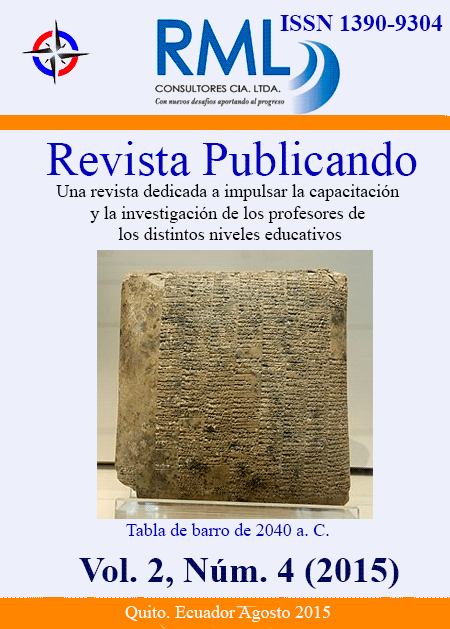Abstract
This research report aims to analyze the possible variables to be taken into account when considering the perception of taxpayers before taxes and is part of an investigation to establish the influence of fiscal policies on the perception of taxpayers.
The documentary and exploratory study made it possible to define the most important, references to analyze the conceptual and methodological foundations of the Theory of Planned Behavior. A detailed review of the papers published in Spanish, related to works about tax collection and produced in different countries, was also conducted.
The exploratory study allowed us to determine the variables that may characterize the perception of the taxpayer, in relation to the risk of evasion and which they were selected: Dissatisfaction with the tax authorities, the so-called return indicator, which expresses a cost-benefit ratio before fiscal tribute, identification with the community, trying to determine the fact that tax evasion is linked to moral attitudes, the fear of criminalization and social rejection.
References
Ajzen, I. (1985). From intentions to actions: A theory of planned behavior: Springer.
Ajzen, I. (1991). The theory of planned behavior. Organizational behavior and human decision processes, 50(2), 179-211.
Ajzen, I. (2002). Constructing a TPB questionnaire: Conceptual and methodological considerations.
Ajzen, I. (2011). The theory of planned behaviour: reactions and reflections. Psychology & health, 26(9), 1113-1127.
Ajzen, I. (2014). The theory of planned behaviour is alive and well, and not ready to retire: a commentary on Sniehotta, Presseau, and Araújo-Soares. Health Psychology Review(ahead-of-print), 1-7.
Ajzen, I., & Madden, T. J. (1986). Prediction of goal-directed behavior: Attitudes, intentions, and perceived behavioral control. Journal of experimental social psychology, 22(5), 453-474.
Barros Vio, B. (2013). ¿ Por qué las personas pagan sus impuestos? Subjetividad y procesos cognitivos, 17(2), 37-47.
González García, M. A., Lópéz, M., Israel, A., García, M., & Wilfredo, N. (2011). Guía de aplicación sobre retenciones y percepciones de los tributos y de los aporte de seguridad social y previsión en El Salvador. Universidad de El Salvador.
Halla, M. (2012). Tax morale and compliance behavior: First evidence on a causal link. The BE Journal of Economic Analysis & Policy, 12(1).
Platero, A. L. (2013). La percepción de la corrupción, factor mediatizante de la democracia. OBETS: Revista de Ciencias Sociales(8), 79-98.
Sánchez, J. S., González, D. S., & Sanz, J. F. S. (2004). Variables explicativas de la percepción impositiva de los contribuyentes españoles: un análisis mediante algoritmos GMDH. Paper presented at the XI Encuentro de Economía Pública:[los retos de la descentralización fiscal ante la globalización].
Torres Ruiz, D. V., Jiménez Peñarreta, H. L., Maluk Uriguen, O., & Efraín Quiñones, J. (2013). La moralidad tributaria y riesgo de evasión tributaria. caso de estudio con las sociedades del Ecuador registradas en el servicio de rentas internas (sri).
Torrón, C. H., Barrasa, T. P., Salinas, F., & Sanz, J. F. S. (2003). Análisis empírico de la percepción impositiva de los contribuyentes españoles: evidencia e impacto sobre las preferencias de reforma tributaria. Paper presented at the Hacienda pública y convergencia europea: X Encuentro de Economía Pública, Santa Cruz de Tenerife 2003.
Trigueros, M. P., Longinotti, F. P., & Vecorena, J. S. (2012). Estimación del Incumplimiento Tributario en América Latina. CIAT Retrieved from http://www.hacienda.go.cr/cifh/sidovih/uploads/archivos/Articulo/Estimaci%C3%B3n%20del%20incumplimiento%20tributario%20en%20Am%C3%A9rica%20Latina.pdf.
Webley, P., Cole, M., & Eidjar, O.-P. (2001). The prediction of self-reported and hypothetical tax-evasion: Evidence from England, France and Norway. Journal of Economic Psychology, 22(2), 141-155.

This work is licensed under a Creative Commons Attribution-NonCommercial-ShareAlike 4.0 International License.
Copyright (c) 2019 Omar Gabriel Mejía Flores, Carlos Vicente Córdova Herrera
